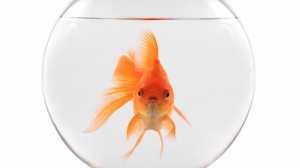Client service director at Hornall Anderson
View Author ProfileAlcohol consumption is falling, so drinks brands must adapt to a new era of choosy and health conscious consumers.
Guides
Marketing Alcohol: From Baby Boomers To Generation Z
Alcohol consumption is falling, so drinks brands must adapt to a new era of choosy and health conscious consumers.

There was a time when each new generation of legal drinkers signalled a fresh opportunity; marketers looked at loyal older customers living longer lives, then at the new arrivals and rubbed their hands with glee.
Lately, however, hand-rubbing has turned to hand-wringing as Generation X clubbers gave way to binge-drinking millennials, too focussed on quantity to care about quality. Surely things couldn’t get worse?
As it turns out, they could: Generation Z are reaching adulthood with very little interest in drinking, full stop. It feels as though alcohol is following tobacco’s path: higher taxes, restricted advertising, social stigmatisation, and a subsequent loss of relevance.
Consumption levels are down to 1979 levels by volume and a recent Demos research report showed that one person out of five among the newest generation of legal drinkers say they don’t want to drink at all.
This is a serious challenge to marketers and may be a return to an old-fashioned form of market segmentation – by age rather than class, or heaven forbid gender. So, let’s examine the generational differences, as these will be vital to appealing to a target market – whoever they are.
Watch the clock
The rave-culture of the 90s and its ban by the authorities, transitioned the buzz-seeking youth towards alcohol and booze brands which welcomed them with open arms. Promotions, happy hours, sponsorship and cheap booze – no wonder that the volumes boomed and drinking loads became socially acceptable and even fashionable.
The year of peak booze – 9.4 litres of pure alcohol per person per year – was 2004; that was Generation X and some millennials. These days, all groups are clearly drinking less. But they are doing so in different ways.
Generation X
The cocktail-crazy Gen X-ers are now at a different life stage and an alcohol rush is not what they are after. A glass of wine at home or the occasional pint at the pub after work are still in favour, but the thirst is not the same.
When it comes to shopping patterns - these drinkers are the ones with most brand loyalty. With so many more labels on the market than they grew up with, they tend to stick with what they know and acquired memories.
This relative disinterest in trying new products may make them seem hard to engage with. As our colleague and partner from TPN Retail Solutions, Justin Stephenson, MD, puts it: “Retailers’ ‘clean floor’ policies and limited opportunities for brands, are doing little to create inspiring environments that would engage and excite these shoppers.”
But don’t be fooled - Gen X are also pragmatic and smart - they research, evaluate and compare before buying, making sure that they get the best price. Sensitive to discounts, and coupons they would give something a go, if the deal was sweet enough.
And they’re easy to reach - they read papers, listen to the radio, watch TV and more importantly – still love going shopping. In this context - a price promotion and sampling stand are likely to be more effective than a flashy ad or viral video.
Millennials
The millennials - who once judged a bottle by its percentage proof - are now thirtysomethings with families and responsibilities …and a few Facebook “memories” they wish they could eradicate.
As a matter of fact - a recent Heineken study demonstrated that 75% of millennials actively try to limit the amount of alcohol they consume on nights out. They have learned from their mistakes; they want quality now, not quantity and they want craft. And with craft comes the high-ticket item, which, luckily, prohibits the binge-drinking.
They also have little or no interest in traditional media and pay more attention to online influencers than to ad stunts. According to TapBuy, 84% of them explain that user generated content had an influence on the products they purchased.
So, when it comes to what’s cool, they want guidance – from the right sources. And the fit is even better when those brands aren’t seen as mainstream, have a sense of authenticity, are socially relevant and acceptable within their peer group.
But when it comes to shopping, they like attention and want to be pampered - personalised offers, customised products, exclusive experiences – they want the full monty for the price of their loyalty. And, like for everything else - the purchasing of alcohol is rushed.
As Justin Stephenson mentioned - “This generation is on the go and has a pre-planned mission for buying specific labels rather than taking the time to browse and explore the category. They aren’t store dwellers which means they aren’t going to spend a lot of time exploring or selecting brands to make their brand choice.”
To ensure a brand captures their attention in-store, it must have made a significant impression pre-shop and placed a brand onto their repertoire list.
Generation Z
Born after 2000, their general interest in alcohol appears to be very different from their predecessors. For them there is no “cool” attached to boasting drunk in front of their peers. Quite the opposite in fact – it is seen as high unappealing and unhealthy.
They are more realistic and optimistic than their parents, with a tendency to think “we” rather than “me.” They expect brands to have a higher purpose, and take genuine stances on social, environmental and even political issues.
To address them brands will need to shift the focus from their heritage or expertise, to the very specific benefit they can offer to each individual, while positively contributing to the world.
And to make it even more complicated – Gen Z are hard to reach and have a miniscule attention span; they multi-task across five screens and value the seamless nature of a shopping experience, rather than the variety of choice. 63% of Gen Z-ers polled in a recent Ernst & Young study said that they shopped online because it "saves time".
But it’s not all bad news with Gen Z - as digital natives, born with a device in one hand, if they like something – the world will know it…quickly! Snapped, Instagrammed and shared with just about everyone.
So hang around – for the moment these teens and young adults have no or very limited disposable income and no or very limited interest in booze – but within the next five years they will become the fastest-growing generation in both - workplace and marketplace and will reshape the retail space.
Storytelling crosses all boundaries
Looking at the bigger picture, consumers today are asking why do you want to sell this to me and why should I buy?
Increasingly, they want brands that can capture their imagination and break social, cultural and category rules. They may differ in how they access the story – in print, on social media or even out there in the world – but without the ability to inspire belief in that story, a brand has nothing.
And when it comes to this belief - cohesion across all points of contact with the consumer is key to build trust and loyalty.
Kraken Rum is a great example of a brand delivering on experience without resorting to traditional advertising. The category redefining bottle design laid the foundation. Its dynamic activity on social media and a community based website engaged consumers and established a solid fan base.
Its famous murals took the brand to the outside world. And its activation program with mysterious ‘Release the Kraken’ parties, brought the brand experience to life.
That’s also where a gin like Portobello Road No.171 has done so well. The genuine passion for gin pushed three entrepreneurs to open the Ginstitute and share their knowledge with the world.
Initially created as the house gin for the masterclasses, the Portobello Road brand got phenomenal traction and became a serious contender on the craft gin market. A true love for the product, beautifully crafted and elegant packaging and award winning flavours – this is a brand you can understand, a product to believe in.
Don’t let the package get forgotten…
To attract increasingly alcohol-frigid drinkers, there must be wow factor. And given the visibility challenge in store, packaging that signifies uniqueness and authenticity is a significant marker to help achieve standout.
Take Thatchers Orchard Cut Gin, a product launched last year and that has a label made from actual wood. Attention-grabbing, tactile, memorable and fits the story of a cider orchard, without it feeling disjointed.
Another example of a brand successfully leveraging its pack is Van Dyck. The brand recently ran a promotion, where they added a little container with Cardamom, Pink Pepper and Juniper Berries to its bottles allowing everyone to customise their vodka mixes.
By cleverly leveraging the packaging, the experience built around it is cannily different and undoubtedly relevant to individualistic millennials.
Lastly - it is worth remembering that while healthy consumers reconsider their drinking patterns, their subconscious attraction to the edgy and quasi-subversive nature of alcohol, keeps them thirsty for daring, provocative designs.
That’s something that the soft drinks market has been leveraging, cleverly applying the traditional visual codes of spirits to tonics, colas and other booze-free refreshments. Bonds, designed by our team, is the perfect illustration.
Taking a leaf out of the exciting gin category, its skull illustration comprised of botanicals creates a new sophisticated savoury tipple to appeal to the adventurous consumer looking for a taste alternative with a bold personality and exciting packaging.
The next big challenge
In a world with non-drinking bars and morning ‘raves’ for all those fresh-faced teetotallers and sobered-up millennials, drinks brands need to fight to stay relevant, cool, and memorable.
Consumers will increasingly expect “better marketing” from booze labels and those offering more engaging, personable experiences, with a deeper story and even a higher purpose will be winning consumers’ hearts and wallets.
And that’s more than possible. After all, those healthy youngsters, isolated with their phones, want interaction beyond the emoji. The same goes for their predecessors, who - after having tried a number of bottles and reduced their selection to a few names - crave some genuine attention in return.
All are avid for an actual dialogue, to be part of some immersive story and live a palpable experience. To deliver this, brands just need to better know what’s going through their consumers’ heads. After all, if you don’t know who you’re talking to, you can hardly complain when they don’t listen.
By Evgueni Spiridonov, Client Service Director, Hornall Anderson.
Most read in Guides
Trending articles on Guides
Top articles on Minutehack
Thanks for signing up to Minutehack alerts.
Brilliant editorials heading your way soon.
Okay, Thanks!





